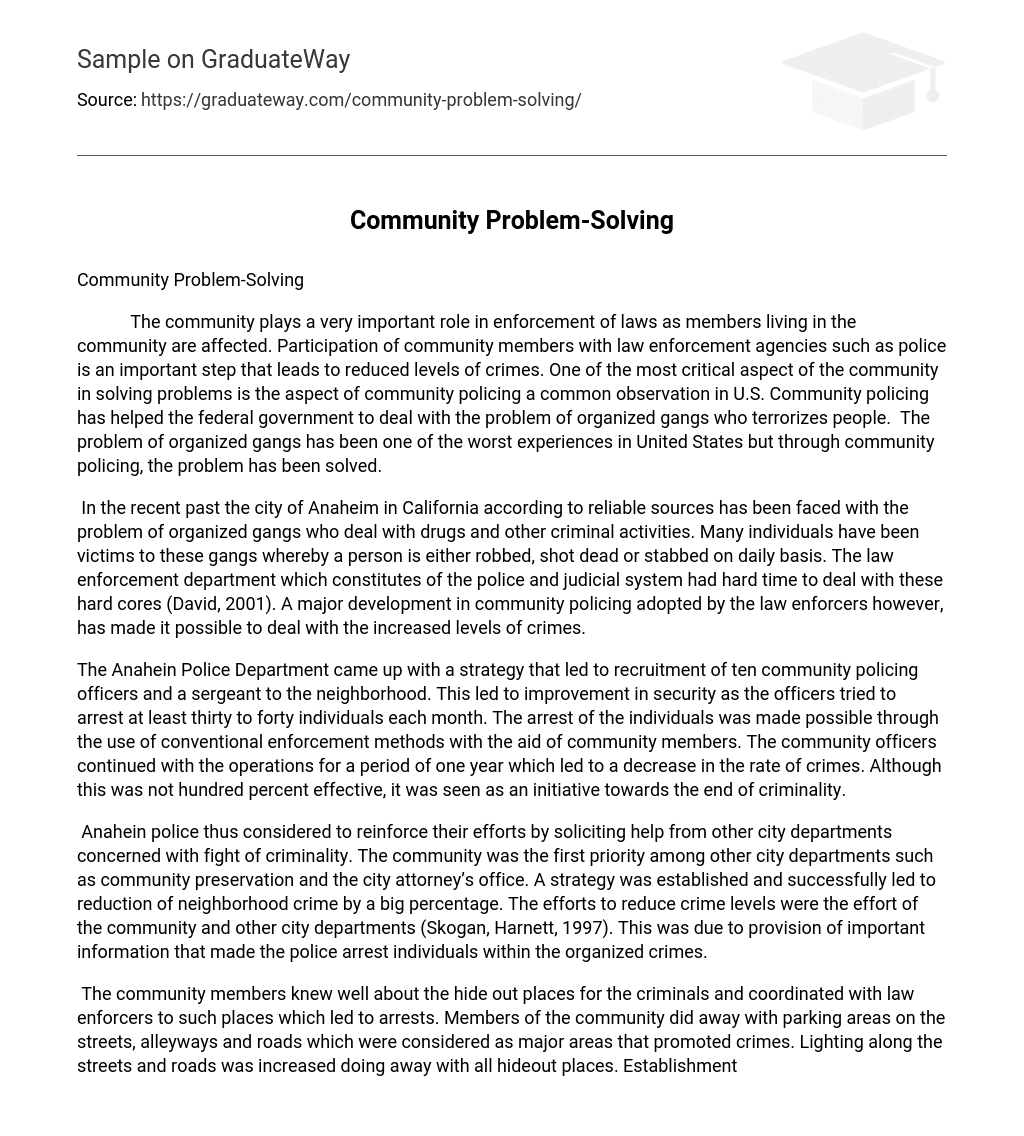The community plays a very important role in the enforcement of laws as its members are directly affected. Participating with law enforcement agencies, such as the police, is an essential step that leads to reduced levels of crime. One critical aspect of the community in solving problems is through community policing, which is a common observation in the United States. Community policing has helped the federal government deal with organized gangs who terrorize people. Organized gangs have been one of the worst experiences in United States history, but through community policing, this problem has been solved.
In recent years, reliable sources report that the city of Anaheim, California has been plagued by organized gangs involved in drug dealing and other criminal activities. Daily incidents of robbery, shootings, and stabbings have left many individuals as victims. The police and judicial system have struggled to deal with these hardened criminals (David, 2001). However, a major development in community policing has enabled law enforcement to better address the rising crime rates.
The Anaheim Police Department implemented a strategy that resulted in the recruitment of ten community policing officers and a sergeant to the neighborhood. This initiative led to an improvement in security as the officers attempted to arrest at least thirty to forty individuals each month. The arrests were made possible through conventional enforcement methods with the assistance of community members. The community officers continued their operations for one year, resulting in a decrease in crime rates. Although not entirely effective, this was seen as a step towards reducing criminal activity.
The Anaheim police department decided to reinforce their efforts in fighting criminal activity by soliciting help from other city departments. Community preservation and the city attorney’s office were among the top priorities, with community safety being the first concern. A strategy was established and successfully led to a significant reduction in neighborhood crime rates. The combined efforts of the community and other city departments (Skogan, Harnett, 1997) played a crucial role in achieving this outcome by providing important information that allowed law enforcement to make arrests within organized crime groups.
The community members were well aware of the hideout places for criminals and coordinated with law enforcement to apprehend them. They eliminated parking areas on streets, alleyways, and roads that were considered hotspots for crime. Lighting along these areas was increased to eliminate any potential hiding spots. The establishment of the Community Preservation Department led to the enforcement of code violations, resulting in cleanups and celebrations within the neighborhood.
Peace has been restored in the community, making people feel more proud and willing to participate in improving the area for better living. One of the most effective methods for solving the problem of organized gangs is through the involvement of the community. This promotes active participation of citizens with a view to influencing decisions made by community members regarding issues that affect everyone (Coombs, 1998). It is a way of increasing leadership capacity, aspirations, skills and confidence – virtues that are essential in any community development process.
Reference
Coombs, M. (1998). The Constricted Meaning of ‘Meaning’ in Community Policing.” St. John’s Law, Vol. 72, pp. 89-103.
David, T. (2001) explored the topic of conflicting values in community policing in his article published in Law & Society Review. The article is available in Volume 35 and spans pages 1-16.
Skogan, W. and Harnett, S. (1997) wrote a book titled Community Policing, Chicago Style” which was published by Oxford University Press.





